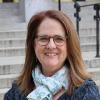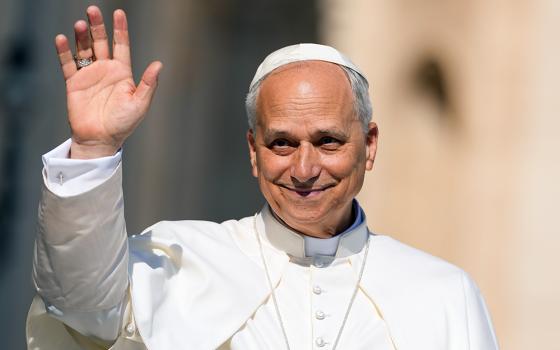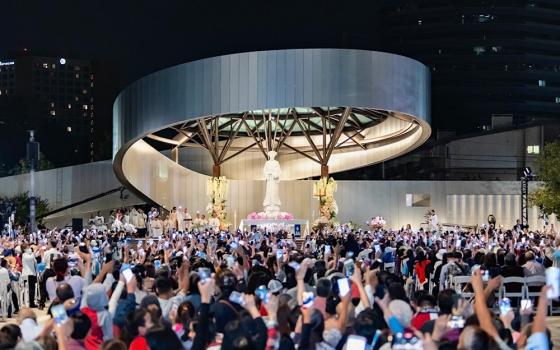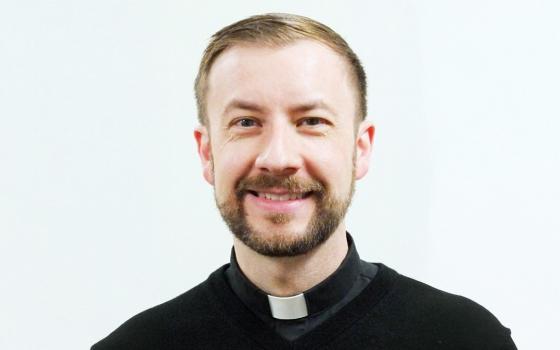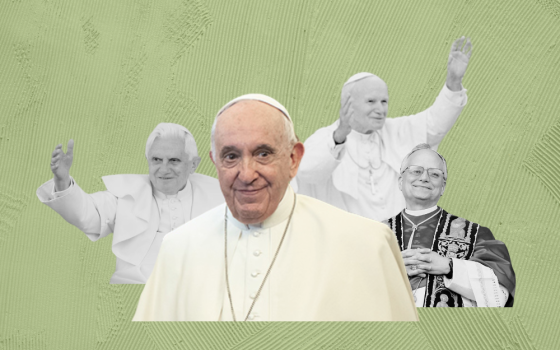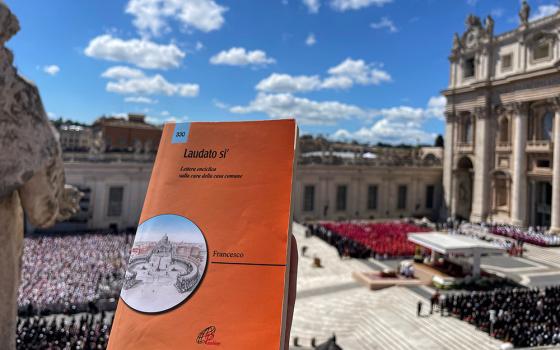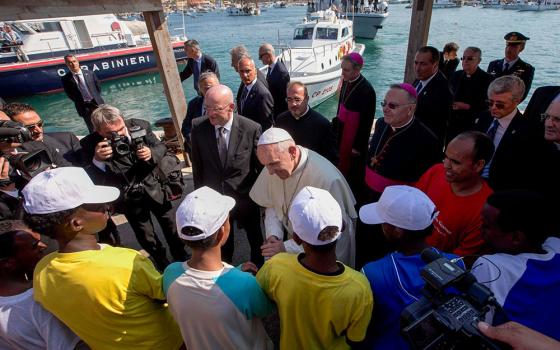Pilgrims cheer and wave a banner saying "Viva il papa" ("Long live the pope") as white smoke rises from the chimney above the Sistine Chapel, indicating a new pope has been elected at the Vatican, March 13, 2013. The conclave to elect a new pope met over two days before making a decision. (CNS/Reuters/Giampiero Sposito)
When the Catholic Church looks to chart its future, it pulls out ancient tools in its wheelhouse.
So even in this digital age, it proudly relies on paper ballots and different shades of smoke in picking and announcing its new leader.
And people are there for it. There's intrigue in the rituals so far removed from 24/7 news cycles and often polarizing political elections.
When the world's Catholic leaders meet behind closed doors in the Vatican's Sistine Chapel starting Wednesday (May 7), they will not give speeches, take part in polls or see their tallied results on a screen.
Instead, they'll write their votes on pieces of paper. Their ballots will be burned in a way that sends smoke that's either black (inconclusive vote) or white (someone has been elected). And while they're contemplating their decisions, the dramatic frescoes of Michelangelo — including one of the Last Judgment on the wall behind the altar — will be staring down at them.
And the faithful and simply curious will be waiting to hear who these church leaders picked to lead the church's 1.4 billion Catholics.
Those in St. Peter's Square are the first to get the news that the election was a success — securing a two-thirds majority — and they will be the first to meet the new pope when he appears on the basilica's balcony.
The square, with its fountains and an obelisk in front of St. Peter's Basilica, is almost a huge parish gathering spot. Its shape is more elliptical than square, wrapped on the perimeter by Bernini's colonnades as arms drawing people to the magnificent 16th century church.
This grey cobblestoned setting is where the church has long celebrated large-scale Masses for Christmas, Easter, sainthood canonizations, papal inaugurations and funerals.
It's where I was on a rainy evening 12 years ago, working for the now-closed Washington bureau of Catholic News Service with our colleagues in the Rome office. Earlier that day, I had been interviewing cardinals over 80, too old to vote but still in town awaiting the decision their brother cardinals came up with.
In the square that night, I was working old-school with my reporter’s notebook and pen, asking people who spoke English what they thought about the conclave process and what type of leader they hoped the cardinals would choose.
In the intermittent rain, my pen stopped working and oddly I was without a back-up. I pleaded in English — and through some pantomining — with an older Italian woman about needing a pen and she graciously figured out what I was asking for and gave me one.
In the square, some people prayed the rosary, others wandered around and plenty took pictures, but all kept their eyes on the smokestack in the distance — also shown on Jumbotron screens — where seagulls occasionally landed. The crowd included pilgrims there just for this election, priests and women religious based in Rome, and plenty of Italians. The feeling among many, including some reporters that night, was that this was not the final vote; the cardinals needed more time.
When the awaited smoke appeared, the crowd gasped but then hesitated en masse, unsure if these puffs were actually white against the grey sky or black. But once the bells pealed from St. Peter's — confirming indeed "habemus papum" (We have a pope) — people burst into cheers and moved like a tidal wave to the front of the square to see the new pope for the first time.
Then we all waited an hour, crammed tightly in our spots but able to put down our umbrellas as the rain subsided. Luckily, I ended up near a priest from New Jersey who spoke English and Italian and helped me interview the people around us and also told me some of the pope's initial greetings.
Pope Francis, of course, had the crowd at "buonasera" and his humble request that they join him in silent prayer. After his brief words, he simply told everyone goodnight and to have a good rest.
But no one wanted to rest. People were dancing in the street, hugging each other and cheering. Even if they didn't know much about the new pope, many already liked what they saw. They were thrilled he was from Latin America and had chosen the name Francis.

Carol Zimmermann in St. Peter’s Square in 2013 days after Pope Francis was elected pope. (Courtesy of Carol Zimmermann)
They still felt that admiration, in the same spot, a little more than 12 years later at his April 26 funeral, but by then people definitely knew who this former cardinal from Argentina was.
After Francis' death, the church paused for a beat but is gearing up to move on. After the required days of mourning and meetings, the cardinals will be ready to once again pick a new leader and crowds will once again fill St. Peter's Square to meet him.
I won't be there this time but I will keep up with the robust NCR crew dispatched to Rome joining our Vatican correspondent Christopher White in this big story.
I'll be watching as the Vatican livestreams the Sistine Chapel smokestack on its YouTube channel, Vatican Media Live, and hoping, like those in the crowd, that the cardinals made a good choice to lead the church forward.
Advertisement
